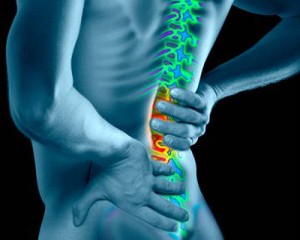The Colorado Marathon and Half-Marathon are coming up on May 5. It’s in Ft. Collins, north of Denver. I’m running the half-. It’s actually my first half-marathon. I’ve run several 10-milers, a 15-mile trail race, 10k’s, 5k’s, and one marathon, so this shouldn’t be any radical departure. This is a very popular race that fills up early. The course is supposed to be scenic and this time of year is spectacular in Colorado. It’s also slightly downhill which should make for a fast race.
My goal time is just under 1:38 about 1:47. That’s based on a 23:10 5k I ran last year. That it’s downhill makes me think I might get a little bit better time. I’ve been following the 3-run per week Runner’s World Run Less, Run Faster plan developed by the Furman Institute of Running and Scientific Training (FIRST). I enjoy the plan for several reasons. First, it covers the whole spectrum of speed: fast track workouts, tempo runs, and long runs. Everything is paced. Times are based on a 5k race time. The plan pushes me to run harder than I probably would on my own. That’s good. Second, with only three runs per week it’s time-efficient. The idea is for you to do only what you need to do and nothing more. That’s another good idea.
I’ve been lifting several times per week with two of those workouts being hard workouts. The workouts are loosely based on the Wendler 5/3/1 scheme. (Week 1: 3×5 reps. Week 2: 3×3 sets. Week 3: 5 reps, 3 reps, 1 rep. Week 4: reduce the work load and take it easy. Then start the process over with more weight.) They’ve looked like this:
Workout 1
- barbell, kettlebell, or dumbbell clean & press
- box back squats
- core work, one or more of the following: ab wheel roll-outs, hanging knee-ups, cable chops, cable lifts, side bends, Turkish get-ups, 1-arm farmer walks
Workout 2
- 1-leg work: pistols alternated each week with 1-leg RDLs. I mix pistols off a box with TRX pistols. Two weeks from the race I’ve done some single leg jumping on and off a plyo box.
- weighted pull-ups or chin ups
- bench press
- core work: similar to workout 1
Other workouts
- Mobility work: I’ve been religious about using the rumble roller, lacrosse ball (big-time favorite of mine), and the Stick to address my soft tissue. I’ve also been smashing my quads with a barbell ala Kelly Starrett’s Becoming a Supple Leopard pg 326. (That one’s great for nausea. That is, if you’re not currently nauseous and you’d like to be, the barbell quad smash will get you there. Seriously, it’s really improved my hip flexor ROM and helped reduce soreness.) I’ve worked a lot on ankle mobility; foot/big toe mobility; hip flexors, extensors, adductors and rotators; quadratus lumborum (HUGELY for me lately), and thoracic mobility. I’ll often combine this work with a trip to the hot tub either before or after.
- If I missed an exercise one day due to time or fatigue, I fit it in on another day.
- There are lots of core exercises to pick from. I don’t do them all in one workout, therefore I often get one or more in on another day.
I think single-leg work is very important. Running is a one-legged gig. Mobility, stability and strength on one leg is an essential ability. Further, it seems that getting strong on one leg makes me stronger on two legs (squat or deadlift), but getting stronger on two legs doesn’t necessarily seem to make me stronger on one leg. The last week before the race I might do some single-leg jumping only–and nothing else. It’s time to rest. More work at this point won’t improve my race performance.
The core work has been a big part of this scheme. I’ve spent more time on specific core work than I have in the past. I understand it better. I perceive its importance more thoroughly than I used to.
I’m hoping for good weather. Spring in Colorado can be sunny and gorgeous or it can be frigid, snowy/rainy, and rough. Sunny and gorgeous is my preference.




